Article from the section «Calendar of work for a gardener, gardener, florist."
Your flower garden: work of the month.
August crept up unnoticed. Behind the friendly blossoming of lilies, daylilies are blooming less and less of their flowers, exquisite in shape and color.
Mid-summer perennials are being replaced by defiantly luxurious dahlias, heleniums, hibiscus, tireless helianthus, clematis, petunias, tagetes continue to bloom, annual asters are blooming...
Divide, plant, replant
To preserve the unique flavor of your garden for years to come, you need to remember about your plants not only when they are in bloom. Even long-lived gardens can lose their decorative properties over the years, become weak, and get sick if you don’t take care of them and don’t grow young replacements for aging plants.
August is the last month of summer, but the end of the season is still far away. Therefore, you need to take care of the appearance of your flower beds.
We will trim the elongated shoots of petunia, faded inflorescences of ageratum, trim the thyme (if we have not done this before), and “return” the overgrown clumps of sedums, geraniums, periwinkles and other perennials to their designated boundaries.
We feed all plants with complex mineral fertilizer. Don't forget to water.
Cut and remove the yellowed daylily leaves.
It is better to divide, plant and replant perennials when the heat subsides. Autumn is long, and plants have time to take root, settle into new places, and prepare well for winter.
Preparing a place for planting perennials
In the meantime, let’s prepare areas for planting perennials and bulbous plants. For each type of plant, we select a location taking into account its requirements for lighting, ventilation, stagnation of spring and rainwater. When choosing a location, we also take into account where the plants will look most advantageous.
Before digging, add compost or humus, add superphosphate (2-2.5 tablespoons), potassium sulfate (1-1.5 tablespoons). Having prepared the area, we water it to stimulate the growth of weeds and then weed them out.
August is a good time to transplant irises
Let's take a closer look at the thickets of irises.Surely, if they have not been replanted for a long time, there are a lot of frail, drooping and yellow leaves on the site. Such a curtain no longer decorates the garden, but reproaches the owners for inattention.
Let's grab a shovel and do a little work. Let's transplant the irises, choosing the healthiest links for planting in a new place - a fan of leaves and a piece of young rhizome.
In cuttings, we shorten the roots and leaves by about 10 cm, keep them in a dark pink solution of potassium permanganate, and then in the sun for about a day.
We dig holes, fill each with a mound, place a rhizome on it, straighten the roots along the slopes, cover with soil, compact with our hands, water, check the planting depth (the rhizome should be at soil level).
Planting lilies
At the end of August, you can begin to plant overgrown nests of lilies. And they divide the nest when 4-6 bulbs are formed in it. But first, let’s dig up one nest and make sure that the bulbs in it have recovered after flowering: the scales on them are juicy and elastic.
If the bulbs are loose, with thin scales, we will postpone replanting and give the bulbs additional time to recover. It is preferable to divide and replant lilies in late summer - early autumn than in spring, when the sprouts that emerge from the ground easily break off.
Preparing the soil for replanting
If lilies are transplanted in their own area, you first need to prepare the soil for planting them and only then start digging up the plants.
On heavy soils, humus and sand are added for digging (a bucket per sq. m). There is no need to add more: excess organic matter causes increased growth of the above-ground parts of plants to the detriment of flowering and the formation of healthy bulbs, reduces the winter hardiness of plants, and makes them susceptible to diseases.
Add humus or compost to light soils (a bucket per square meter). Add superphosphate and potassium sulfate - 2 and 1 tbsp, respectively. spoons. It is important to keep the lily bulbs and their roots fresh and not dry them out.
Lilies are planted to a depth 2-3 times greater than the height of the bulb. It is advisable to pour a layer of sand at the bottom of the planting grooves, on which the bulbs are placed, the roots are straightened and covered first with sand and then with good fertile soil.
Dividing overgrown peonies
We begin dividing and replanting peonies with extreme caution. For each division, we dig wide and deep holes (up to 70 cm) so that there is room to add a nutritious soil mixture: 2-3 buckets of compost or humus, a glass of potassium sulfate and superphosphate, mix everything thoroughly.
Sprinkle a 20-25 cm layer of regular fertile soil on top without fertilizers. It is advisable to prepare the holes in advance - three weeks before planting, so that the soil settles well.
If you decide to plant several bushes nearby, holes are dug a meter apart from each other. Typically, a dug out peony bush is divided into parts with 3-4 renewal buds. But experts consider cuttings with 1-2 buds and a small piece of rhizome to be higher quality planting material.
Plants obtained from such “babies” are distinguished by greater health and longevity, since their root system is almost completely renewed.
When planting on heavy soils, the buds of the divisions are buried by 3-5 cm, and on light soils by 5-7 cm. If planted shallower, the plants may suffer from frost in winter, and from overheating in summer. Deeper planting is one of the reasons for the lack of flowering in peonies.
Cuttings from perennials
August is a favorable time for cuttings of perennials.Let’s say a neighbor liked a sedum or phlox, a Korean chrysanthemum... It’s not at all necessary to wait until they give us a piece of rhizome when replanting; just ask for the apical part of the shoot of the plant you like.
If there are few cuttings, it is better to root them in some kind of bowl or seedling box placed in a shaded place. Pour drainage (sand or fine expanded clay) into the bottom of the container. Then - a three-centimeter layer of fertile soil, and then pour five centimeters of clean sand on top of it.
Having taken root in the sand, the cuttings take root in the fertile layer and begin to grow actively. For cuttings (part of a shoot with 2-3 internodes), the lower leaves are cut off, the upper leaves are shortened, and the lower part (where the leaves are cut) is buried in a moistened layer of sand.
After planting, the cuttings are covered with film or glass and placed in a shaded place. Rooted cuttings are planted in a permanent place. In the first winter, they are insulated by sprinkling the soil with compost and leaves.
A young clematis plant can be guaranteed to be obtained by digging a layer next to the bush.
Near the bush, we dig a groove about 10 cm deep. Without cutting, carefully remove one shoot from the trellis, place it on the bottom of the groove, fix it with wire pins and sprinkle it with nutritious soil, leaving the growth point of the shoot on the surface (20 centimeters).
The main job is done. Now all that remains is to water regularly. In a year we will have several young plants of our favorite clematis.
- You can read more about clematis cuttings in the article "Propagation of clematis"
- If you are interested in how to cut roses from a bouquet both in winter and summer, this article will be useful to you "Cultivation roses from presented bouquets"
It is not difficult to propagate Asiatic lilies. Among the bulblets formed in the axil of their leaves, you can select the largest ones (and they are larger on young plants) and plant them in a small, weed-free area.
We plant the bulbs no deeper than 2-3 cm. We place the rows 20 cm apart from the row, plant the bulbs in the row every 5-6 cm. We water the furrows before planting. We fill the bulbs with fertile soil and mulch with compost. After a year, the lilies will develop a rosette of leaves, and in the third year they will bloom.
In August you can collect flower seeds
Don’t put off collecting perennial seeds until the fall. Seeds collected in cold, wet weather are less likely to germinate. And they can crumble before you get your hands on them.
Snapdragon flower stalks are cut for seeds when holes appear on the lower seed pods.
Zinnia seeds ripen more evenly and stay in the inflorescences well. But still, it is better to collect them and dry them in a well-ventilated area.
As they ripen, the seeds of fragrant tobacco, gatsaniya, sanvitalia, tagetes and other annuals are collected. It makes sense to collect seeds even from such “self-sowing” plants as Nigella and Eschscholzia. They themselves will sow seeds wherever they please, and in the spring you will throw them into the ground where they are appropriate.
It's time to bring indoor flowers into the house
At the end of the month we begin to gradually return indoor plants to the apartments. Before this, we wash the leaves and treat them with phytoverm so as not to bring home aphids or spider mites.
Ficus, hibiscus and other large plants that have grown over the summer may require transferring to a larger container.For other plants, it would be a good idea to replace the top layer of soil: from frequent watering, which is inevitable in the summer, it has lost its nutritional value.
Let's carefully examine the plants themselves: perhaps they need to pinch the tops, cut out weak, drying shoots.
In order not to lose the pelargonium colors you like, we cut cuttings. They will take root faster than cuttings taken in the fall. You can transplant several smaller pelargonium plants from the flower garden into pots in order to move them into rooms before the onset of autumn cold weather.
Have you noticed the “beaks” of seeds on the pelargonium inflorescences? Collect them to sow in winter. The seedlings grow into neat, abundantly flowering bushes.
We reduce the amount of nitrogen in fertilizing for all plants: let them begin to prepare for winter. We prepare hippeastrums for the dormant period by gradually reducing watering and thereby allowing the leaves to dry out and “pump” the stored nutrients into the bulbs.
We transplant the awakened cyclamen tubers into a mixture of leaf soil, humus, peat, sand (3:1:1:1).
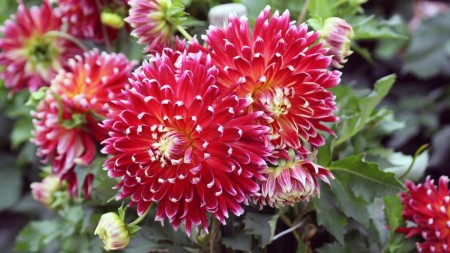
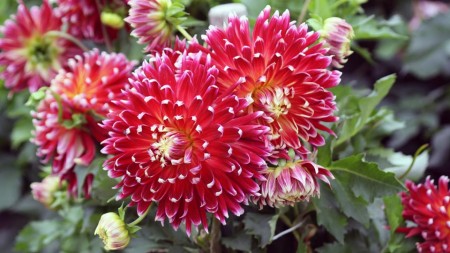
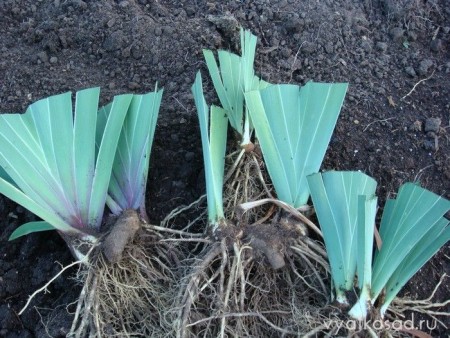
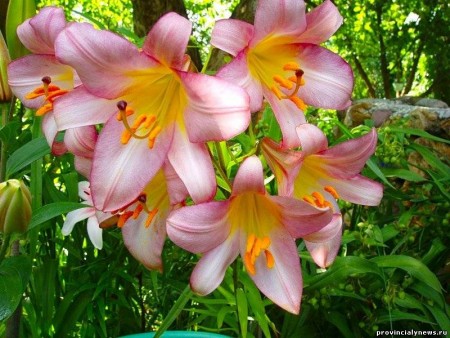


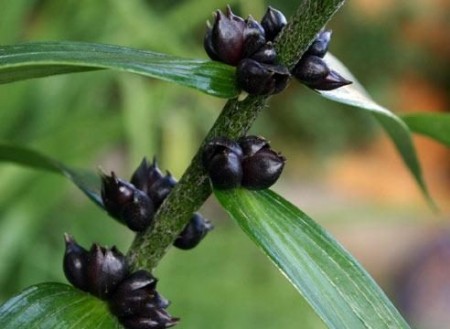
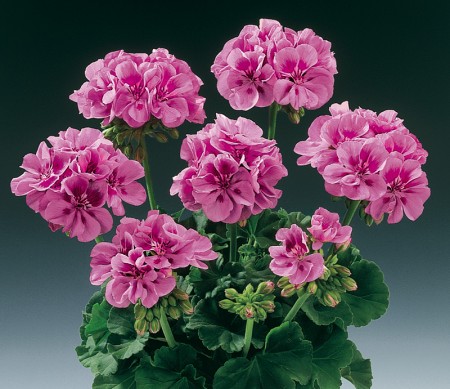

 (10 ratings, average: 4,60 out of 5)
(10 ratings, average: 4,60 out of 5) CUCUMBERS NEVER GET SICK, I'VE BEEN USING ONLY THIS FOR 40 YEARS! I SHARE A SECRET WITH YOU, CUCUMBERS ARE LIKE THE PICTURE!
CUCUMBERS NEVER GET SICK, I'VE BEEN USING ONLY THIS FOR 40 YEARS! I SHARE A SECRET WITH YOU, CUCUMBERS ARE LIKE THE PICTURE! You can dig a bucket of potatoes from each bush.Do you think these are fairy tales? Watch the video
You can dig a bucket of potatoes from each bush.Do you think these are fairy tales? Watch the video
 How our fellow gardeners work in Korea. There is a lot to learn and just fun to watch.
How our fellow gardeners work in Korea. There is a lot to learn and just fun to watch. Eye trainer. The author claims that with daily viewing, vision is restored. They don't charge money for views.
Eye trainer. The author claims that with daily viewing, vision is restored. They don't charge money for views. A 3-ingredient cake recipe in 30 minutes is better than Napoleon. Simple and very tasty.
A 3-ingredient cake recipe in 30 minutes is better than Napoleon. Simple and very tasty. Therapeutic exercises for cervical osteochondrosis. A complete set of exercises.
Therapeutic exercises for cervical osteochondrosis. A complete set of exercises. Which indoor plants match your zodiac sign?
Which indoor plants match your zodiac sign? What about them? Excursion to German dachas.
What about them? Excursion to German dachas.